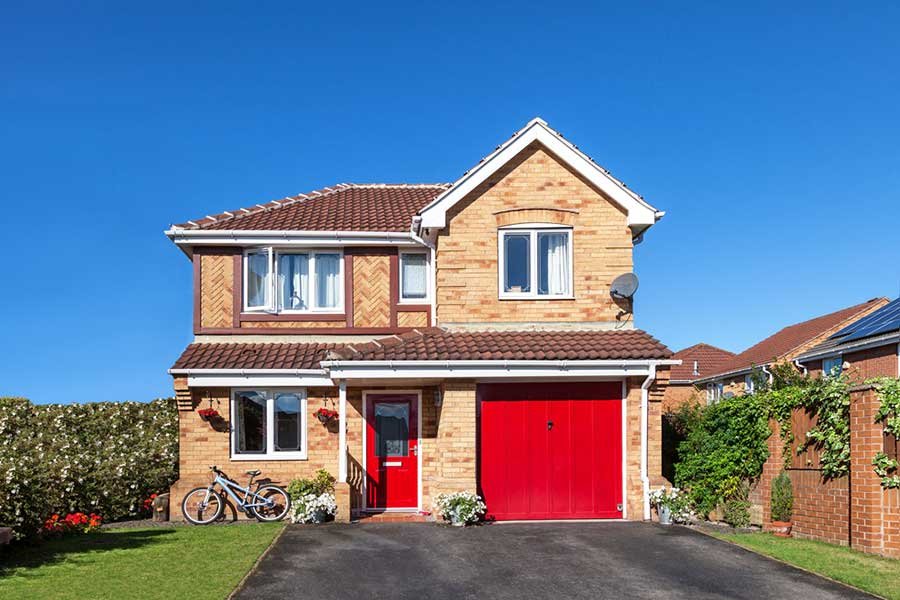The Stamp Duty Land Tax (SDLT), managed by His Majesty’s Revenue and Customs (HMRC), is a mandatory tax paid when purchasing property or land in England or Northern Ireland. Introduced in 2003 to replace the older stamp duty system, SDLT follows a progressive rate structure, where different portions of the property price are taxed at varying rates. The system applies to both freehold and leasehold transactions, as well as transfers involving monetary value or lease extensions.
- SDLT updates effective from October 31, 2024 to March 31, 2025, introduce revised rate bands.
- First-time buyers can enjoy tax relief on properties worth up to £625,000.
- Non-UK residents and multiple-property owners face additional surcharges under new HMRC regulations.
Table of Contents
Understanding Stamp Duty Land Tax (SDLT)

SDLT liability arises when a buyer purchases property or land above the established threshold. It applies to transactions by individuals, companies, or trusts. Residential properties such as houses, flats, and leasehold apartments follow residential rates, while commercial and mixed-use properties have separate tax structures.
Certain transactions are exempt, such as gifts with no financial exchange, inherited properties, and transfers between spouses or civil partners. However, even in exempt cases, buyers must file an SDLT return to formally record the transaction with HMRC.
Updated SDLT Rate Bands for Residential Properties
HMRC has introduced updated SDLT rate bands effective between October 31, 2024, and March 31, 2025. These follow a “slice system,” meaning each portion of the property value is taxed at its respective rate.
| Property Price Range | SDLT Rate |
|---|---|
| Up to £250,000 | 0% |
| £250,001 – £925,000 | 5% |
| £925,001 – £1,500,000 | 10% |
| Over £1,500,000 | 12% |
Example:
For a property valued at £600,000, the first £250,000 is exempt from tax, while the next £350,000 is taxed at 5%, resulting in a total SDLT of £17,500.
First-Time Buyer Relief
The UK government continues to support first-time homebuyers through SDLT relief. This initiative is designed to ease the financial burden on new entrants to the property market.
Relief Rates:
- 0% on the first £425,000 of the property price
- 5% on the amount between £425,001 and £625,000
- No relief applies for properties valued above £625,000
This relief aims to improve housing affordability and encourage homeownership among younger and first-time buyers.
Higher Rates and Surcharges
Certain buyers face additional SDLT surcharges based on their property portfolio or residency status:
- Additional Property Surcharge: Buyers owning multiple properties (second homes, buy-to-let, or investment properties) pay an extra 5% surcharge.
- Non-UK Resident Surcharge: Non-UK residents must pay an additional 2% surcharge on top of the standard SDLT rate. Residency status is determined based on days spent in the UK within the previous 12 months.
- Corporate Purchases: Companies purchasing residential properties valued over £500,000 are subject to a flat 17% rate, regardless of price bands.
SDLT on Leasehold Properties
For leasehold transactions, SDLT applies to both the lease premium (the amount paid to acquire the lease) and the net present value (NPV) of rent over the lease term.
- The lease premium is taxed using standard SDLT rates.
- The rent component is taxed at 1% if the NPV exceeds £250,000.
This ensures fair taxation for long-term leases and high-value rental agreements.
Exemptions, Refunds, and Relief Options
Certain property transactions remain exempt from SDLT, including:
- Transfers between spouses or civil partners
- Inherited properties under a valid will
- Gifted properties without monetary exchange
- Transactions below the £250,000 threshold
Buyers who paid the higher rate due to owning multiple homes can claim refunds if they sell their previous main residence within 36 months. Refunds can be processed through HMRC’s online portal or by filing an amended return.
Non-Residential and Mixed-Use Properties
Non-residential and mixed-use properties (such as offices, retail shops, industrial buildings, or commercial land) follow lower SDLT rates to promote investment and business growth.
| Property Price Range | SDLT Rate |
|---|---|
| Up to £150,000 | 0% |
| £150,001 – £250,000 | 2% |
| Over £250,000 | 5% |
These lower rates encourage commercial property development and sustain economic expansion across sectors.
Filing, Deadlines, and Compliance Requirements
Buyers must submit an SDLT return and make payment within 14 days of property completion. Late submissions can lead to penalties and interest charges.
In most cases, solicitors or conveyancers handle SDLT filing on behalf of clients, ensuring compliance and timely payment. HMRC also provides an online SDLT calculator to help estimate tax liabilities. Accurate filing is essential for the Land Registry to process title transfers without delays.
Regional Impact of SDLT Reform
The 2025 SDLT reform is expected to have uneven regional impacts due to differing property values across the UK.
| Region | Homes Over £500,000 | Expected Impact |
|---|---|---|
| London | ~60% | Broad and significant impact |
| South East England | ~40% | High concentration of affected properties |
| Midlands | ~15% | Limited reach |
| North East England | ~8% | Minimal effect |
| Wales & Scotland | ~10–12% | Moderate impact |
This variation highlights the challenge of implementing a unified national tax system. While southern regions may experience higher SDLT burdens, northern regions are expected to benefit from comparatively lower rates and fewer taxable transactions.
Frequently Asked Questions (FAQs)
1. Who pays Stamp Duty Land Tax?
The buyer is responsible for paying SDLT, not the seller. Payment must be made to HMRC within 14 days of property completion.
2. Do I need to pay SDLT if I receive a property as a gift?
No. If no money or debt is exchanged, SDLT does not apply. However, an SDLT return must still be filed to record the transaction.
3. How do first-time buyers claim SDLT relief?
Relief is automatically applied if buyers meet eligibility criteria. Solicitors typically claim it when filing the SDLT return.
4. Can SDLT be refunded?
Yes. If you pay a higher rate due to owning multiple properties and sell your previous home within 36 months, you can request a refund via HMRC.
5. Are SDLT rules the same across the UK?
No. Scotland and Wales operate under their own systems – Land and Buildings Transaction Tax (LBTT) and Land Transaction Tax (LTT) – which follow similar principles but have distinct thresholds and rates.
The 2025 SDLT updates represent one of the most comprehensive changes to UK property taxation in recent years. While the adjustments aim to modernize tax collection and enhance housing affordability, they also highlight the stark regional disparities in property values.
By refining rate structures and improving relief measures, HMRC’s revised SDLT framework seeks to balance fairness, affordability, and revenue generation – ensuring that the property market remains both transparent and sustainable in the years ahead.



